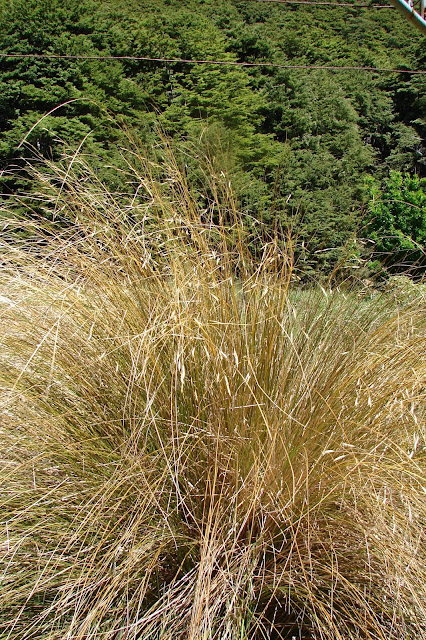Chionochloa rubra or red tussock is endemic to the North, South, and Stewart Islands from the Volcanic Plateau southwards. In the far south it attains its greatest development in parts of Otago and Southland. Chionochloa rubra is divided into 3 subspecies, but the one usually grown is C. rubra ssp. Cuprea or copper tussock, which is endemic to the South Island (North Canterbury and south and west to Fiordland) and Stewart Island. It grows in coastal to alpine regions from sea-level to 1500m asl., inhabiting bogs and tussock grassland where it may be the dominant tussock. It grows to forma large flowing tussock up to 1.6m tall and 1.8m wide, with finer foliage than some of the other forms, and when rippled by the wind it provides a lovely flowing effect. Its leaves have a typical tawny colour that can have very orange or reddish tones in the cooler autumn and winter conditions. It is a very hardy plant, and will grow in a wide variety of conditions, in exposed and windy sites, in low-fertility soils, and will tolerate relatively wet or dry soils. In the garden it is a great plant as an individual specimen, or for making a fantastic display when planted in a group. It is also a very useful plant for providing habitat for wildlife, especially as a marginal plant around ponds and wetland areas.
Monday, 24 September 2018
Subscribe to:
Post Comments (Atom)
Leptinella squalida subsp. mediana is endemic to the South and Stewart Islands. It is found from northwest Nelson and inland Marlborough to...

-
Olearia odorata or scented tree daisy is endemic to the South Island. Its is found in lowland and montane shrubland and scrub, in the easter...
-
Dacrydium cupressinum, rimu or red pine is endemic to the North, South and Stewart Islands - uncommon in large parts of the eastern South Is...
-
Leptinella squalida subsp. mediana is endemic to the South and Stewart Islands. It is found from northwest Nelson and inland Marlborough to...





No comments:
Post a Comment